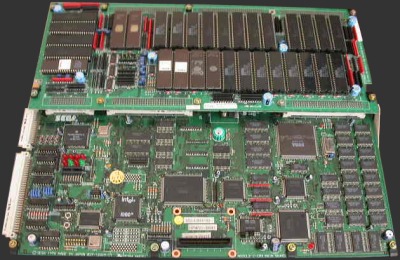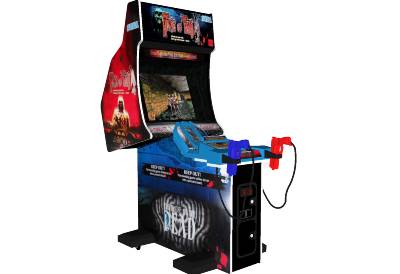
Ever wonder how gameplay and graphics in arcade video games were amazing back in the early mid 90’s? Sega had gotten that covered with there popular arcade board system, the Sega Model 2. The Sega Model 2 is an arcade system board released by Sega in 1993. Like the Model 1, it was developed in cooperation with Martin Marietta, and was a further advancement of the earlier Model 1 system. The most noticeable improvement was texture mapping, which enabled polygons to be painted with bitmap images, as opposed to the limited monotone flat shading that Model 1 supported.

The Model 2 arcade system was very successful and featured some of the highest grossing arcade at its time such as The House of the Dead.
Hardware Description
Main CPU : Intel i960-KB @ 25 MHz 32bits RISC
Co-Processors : Fujitsu TGPx4 MB86235 FPU 32bits 16M flops
Co-Processor Abilities : Floating decimal point operation function, Axis rotation operation function, 3D matrix operation function.
Memory RAM : 8 M-Bits + 1 M-bit
Memory ROM : 720 M-bits (max.)
Video resolution : 496×384 24Hz Horizontal sync, wave, non interlace.
Scroll Surfaces : 2 Surfaces, Horizontal line scroll, 16 colours x 123 colour palettes / 32,768 colours
Window Surfaces : 2 Surfaces, Horizontal line scroll, 16 colours x 123 colour palettes / 32,768 colours
3D Graphics Engine : Built in floating decimal point unit.
900,000 vectors/sec (max.) 300,000 polygons/sec (max.)
Polygon Surfaces : (at least) 2,000,000 pixels/frame (60 frames/sec)
1,024 colour palettes x 64 luminance tables, 16,777,216 colours.
Texturing Information : Perspective Texture, 16 shade mono texture
Map size : 1024x2048x2 (sheets)
Micro Texture : 128x128x8 Sheets
Translator Map : 128 shades x 256 sets
Transparent 1 shade, checker board, texture antialiasing.
To demonstrate the hardware’s use, take a look at this playthrough of The House of the Dead.
